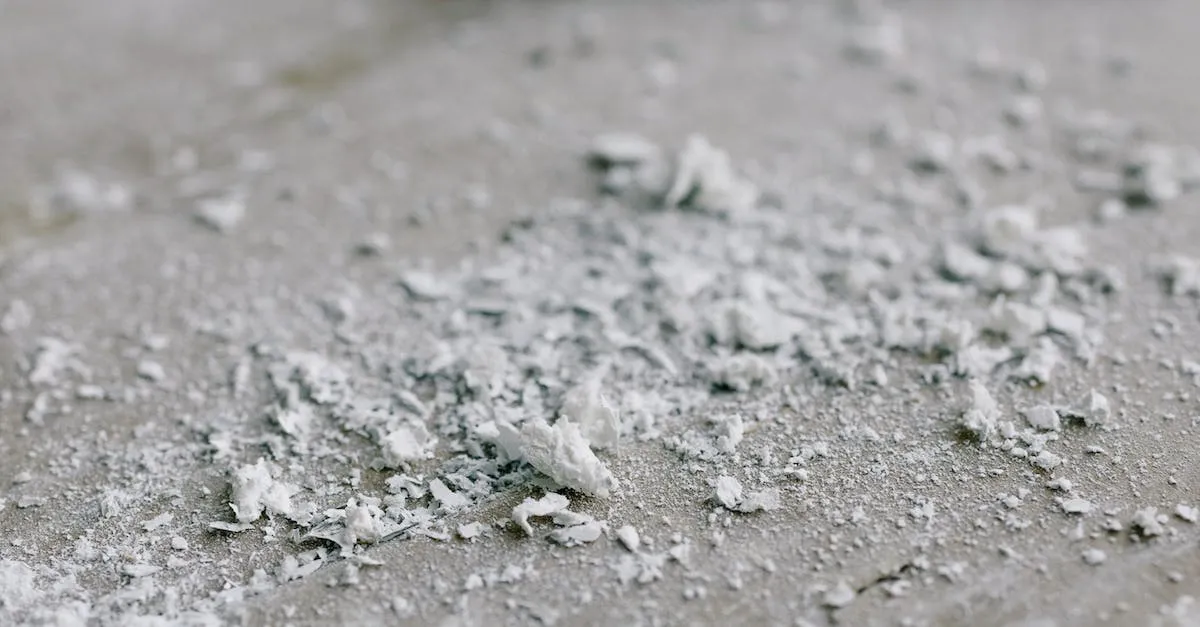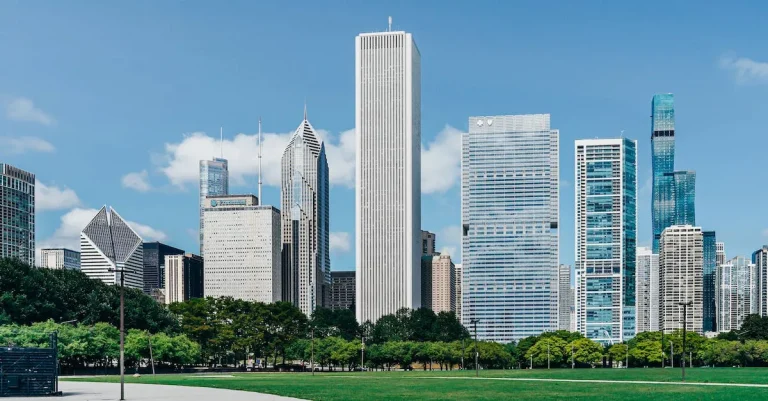Why Is New York City So Dirty? Examining The Causes Of Nyc’S Garbage Problem
New York City is vibrant and iconic, but it’s also known for being quite dirty and covered in garbage. Visitors are often shocked at just how much litter cakes the sidewalks and streets. So why exactly is New York so dirty compared to other major cities?
Here’s a quick answer: New York’s massive population and density, aging infrastructure, strained sanitation department, and some uncleanly habits of residents all contribute to an ongoing battle with keeping garbage under control.
Sheer Scale of Waste in a Mega-City
New York City, often referred to as the “Big Apple,” is not only known for its iconic skyline and bustling streets but also for its immense amount of waste. With a population of over 8 million residents and millions of tourists visiting each year, the city’s garbage problem is a result of the sheer scale of waste generated.
NYC residential garbage output is over 3 million tons a year
Residential garbage is a significant contributor to New York City’s waste problem. With more than 3 million tons of garbage produced by residents annually, it is clear that managing this vast amount of waste is a challenge.
The city’s Department of Sanitation has implemented various strategies to handle this volume, including curbside collection, recycling programs, and waste reduction initiatives.
50,000 tons of trash collected from streets and bins weekly
In addition to residential waste, the streets and public areas of New York City accumulate a staggering amount of trash. Each week, approximately 50,000 tons of trash are collected from streets and bins across the city.
This immense quantity of waste requires a well-coordinated effort from sanitation workers to ensure that the streets remain clean and free from litter.
More people means more litter in public areas
As one of the most densely populated cities in the United States, New York City’s garbage problem is exacerbated by the large number of people living and visiting the city. The higher population density leads to more litter in public areas, such as parks, sidewalks, and subway stations.
Despite efforts to promote responsible waste disposal, some individuals may still litter or improperly dispose of their garbage, adding to the overall cleanliness challenge.
According to a study conducted by the website NYC.gov, the average New Yorker generates about 7 pounds of waste per day. This adds up to over 25,000 tons of residential waste generated daily in the city.
Density Exacerbates Dirtiness
New York City’s reputation for being dirty is closely tied to its high population density. The city is home to over 8.5 million people, making it one of the most densely populated areas in the world. With so many people living, working, and visiting the city, it’s no surprise that there is a significant amount of garbage generated on a daily basis.
Congested streets and sidewalks lead to more opportunities for littering
One of the reasons why New York City is so dirty is the congestion on its streets and sidewalks. The constant flow of pedestrians, cars, and delivery trucks creates a chaotic environment where littering can easily occur.
With so many people rushing to get to their destinations, it’s not uncommon for trash to be dropped or blown away without notice.
To combat this issue, the city has implemented street cleaning programs and increased the number of sanitation workers to keep the streets as clean as possible. However, the sheer volume of foot traffic and the limited space for trash cans make it challenging to maintain cleanliness at all times.
Less public trash cans available with limited space
Another factor contributing to the dirtiness of New York City is the scarcity of public trash cans. While you may assume that there would be numerous trash cans available throughout the city, the reality is quite different.
Due to limited space and zoning regulations, the number of public trash cans is far lower than what is needed to accommodate the city’s population. This scarcity of trash cans leads to more littering and garbage being left on the streets.
The city has recognized this issue and is working to increase the number of public trash cans in high-traffic areas. By providing more convenient opportunities for people to dispose of their trash, the hope is that the streets will become cleaner and more enjoyable for everyone.
Garbage piles up quickly with little room for error
In a city as densely populated as New York, garbage piles up quickly. With limited space for waste disposal facilities and strict regulations on garbage collection, the city faces constant challenges in managing its waste effectively.
Even with an extensive network of sanitation workers and trucks, it’s a constant battle to keep up with the demand.
The New York City Department of Sanitation is responsible for collecting and disposing of the city’s garbage. They work tirelessly to ensure that the streets are kept clean and that waste is disposed of properly.
However, the sheer volume of garbage generated by the city’s population means that mistakes and delays can occur, leading to garbage piling up in certain areas.
Efforts are being made to improve waste management in the city, including initiatives to increase recycling and reduce waste overall. However, the challenges posed by New York City’s density and limited space make it an ongoing struggle to keep the city as clean as possible.
NYC Infrastructure is Outdated
New York City is known for its bustling streets, iconic skyline, and vibrant culture. However, one aspect of the city that often goes unnoticed is its outdated infrastructure, which plays a significant role in the city’s garbage problem.
From the sewer system to waste management practices, the city’s infrastructure is struggling to keep up with the demands of its growing population.
Much of the sewer system is over 100 years old
One of the major factors contributing to New York City’s garbage problem is its aging sewer system. Much of the city’s infrastructure dates back to the early 20th century, and as a result, it is ill-equipped to handle the volume of waste produced by the city’s millions of residents and visitors.
The outdated sewer system often leads to blockages and overflows, causing garbage and debris to accumulate on the streets and sidewalks.
Old pipes lead to leaks, blockages, and overflow issues
The old pipes in New York City’s sewer system are prone to leaks and blockages, further exacerbating the city’s garbage problem. These leaks allow sewage and other waste materials to seep into the surrounding environment, polluting the streets and waterways.
Additionally, the blockages caused by the outdated pipes can result in overflowing sewers during heavy rainfall, leading to even more garbage on the streets.
Outdated practices like open dumpsters exacerbate problems
In addition to the outdated infrastructure, New York City’s garbage problem is also worsened by outdated waste management practices. One such practice is the use of open dumpsters, which are commonly found on the streets of the city.
These open dumpsters are easily accessible to rodents and other pests, leading to scavenging and the spread of garbage across the streets. Furthermore, these open dumpsters often overflow, causing trash to accumulate and create an unsightly and unsanitary environment.
It is important to note that the city is taking steps to address these issues. Efforts are underway to modernize the sewer system and implement more efficient waste management practices. However, these changes take time and significant investment.
In the meantime, it is crucial for residents and visitors alike to be mindful of their waste disposal habits and do their part to keep the city clean.
Sanitation Department Budget Strains
The sanitation department budget plays a significant role in the cleanliness of any city, including New York City. Unfortunately, budget cuts have had a detrimental impact on the city’s sanitation services.
With limited financial resources, the department has been forced to reduce its workforce and limit the frequency of garbage collection in certain areas.
Department budget cuts have reduced services
Due to budget constraints, the New York City Sanitation Department has had to make difficult decisions regarding the services it can provide. This has resulted in reduced garbage collection frequency in some neighborhoods, leading to overflowing trash cans and unsightly streets.
The lack of regular collection not only contributes to the city’s dirty appearance but also poses potential health risks.
Budget cuts have also impacted the department’s ability to invest in modern sanitation technologies. Smart bins and sensors, which can monitor trash levels and schedule pickups accordingly, have been proven effective in other cities.
However, the limited budget has prevented New York City from implementing such innovations, resulting in inefficiencies in waste management.
Low staff retention makes consistent service difficult
Another issue contributing to New York City’s garbage problem is the low staff retention within the sanitation department. The demanding nature of the job, coupled with low wages, has resulted in high turnover rates among sanitation workers.
This constant turnover makes it challenging to maintain consistent garbage collection schedules, leading to delays and missed pickups.
To address this issue, the city should consider investing in better training programs and offering competitive wages to attract and retain qualified sanitation workers. By improving staff retention, the department can ensure more reliable and efficient garbage collection services throughout the city.
Lack of modernization like smart bins and sensors
While many cities worldwide have embraced modernization in waste management, New York City has lagged behind. The lack of investment in technologies like smart bins and sensors has made it difficult for the sanitation department to optimize garbage collection routes and schedules.
Smart bins equipped with sensors can detect when they are nearing capacity and alert sanitation workers for timely collection. By implementing these technologies, New York City can improve efficiency, reduce overflowing trash cans, and maintain a cleaner city overall.
Other cities, such as San Francisco and Singapore, have successfully implemented similar systems and have seen significant improvements in waste management.
It is essential for New York City to prioritize the modernization of its waste management infrastructure. By investing in smart bins and sensors, the sanitation department can streamline its operations, reduce garbage overflow, and contribute to a cleaner and more livable city for its residents and visitors alike.
Careless Resident Behavior
One of the major causes contributing to the dirtiness of New York City is the careless behavior of some residents. Unfortunately, there are individuals who litter or dump large items irresponsibly, disregarding the impact it has on the cleanliness and overall appearance of the city.
This behavior not only affects the aesthetic appeal but also poses environmental and health hazards.
Some residents litter or dump large items irresponsibly
Despite the presence of numerous trash bins and recycling centers throughout the city, some residents choose to discard their waste improperly. They may throw trash on the streets, sidewalks, or even in public parks, creating an unsightly and unclean environment.
Additionally, some individuals dump large items such as furniture or appliances on the curbside, without following proper disposal procedures.
This careless behavior not only leads to the accumulation of garbage but also attracts pests such as rats and insects, further exacerbating the cleanliness issues in certain neighborhoods. It is crucial for residents to understand the importance of proper waste disposal and take responsibility for keeping their surroundings clean.
Construction dumping debris is a common issue
Another significant contributor to the garbage problem in New York City is the improper disposal of construction debris. During construction or renovation projects, contractors and workers may often neglect to dispose of their waste properly.
This can include materials such as concrete, bricks, and other construction-related debris.
Construction dumping not only adds to the overall garbage problem but also poses safety hazards for pedestrians and residents. It is essential for construction companies and contractors to adhere to proper waste management practices to ensure a cleaner and safer environment for everyone.
Insufficient civic pride to keep neighborhoods clean
While many New Yorkers take pride in their city and actively participate in keeping it clean, there is a portion of the population that lacks sufficient civic pride. This lack of pride in their neighborhoods leads to negligence in maintaining cleanliness standards.
Efforts to promote community involvement in cleanliness initiatives can help address this issue. By organizing neighborhood clean-up events, educating residents about the importance of a clean environment, and fostering a sense of pride in their communities, we can inspire more New Yorkers to actively contribute to a cleaner city.
It is important to note that while some residents may engage in careless behavior, the majority of New Yorkers are dedicated to maintaining a clean and vibrant city. By working together and addressing the root causes of the garbage problem, we can ensure that New York City remains a great place to live, visit, and enjoy.
Conclusion
While the sheer amount of waste produced in NYC poses an inherent challenge, shortfalls in infrastructure, services, and public responsibility have compounded sanitation issues over time. By tackling these root causes with creative solutions, New York can work towards shedding its gritty image and setting a new standard for clean, livable megacities.








